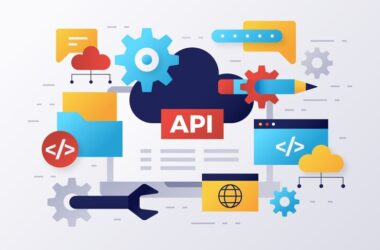The DRY Principle, standing for “Don’t Repeat Yourself,” guides software development to reduce code repetition. It insists on a single, authoritative source for each piece of knowledge, thus boosting code maintainability and efficiency. This principle comes from “The Pragmatic Programmer” by Andy Hunt and Dave Thomas. It underlines the importance of unique information representation for smoother project flow.
Applying the DRY principle lowers the risk of code duplication, caused by errors, tight deadlines, or constraints. Through automation, normalization, and proper abstractions, teams enhance collaboration and minimize mistakes. The DRY principle, therefore, makes software coding more effective and dependable.
What is the DRY Principle?
The DRY Principle stands for “Don’t Repeat Yourself.” It’s a key rule in creating software. It aims to decrease repeating info in a system. By making sure each knowledge piece has a single, clear source, developers can build more straightforward, easier-to-maintain software.
Definition and Origins
Andy Hunt and Dave Thomas introduced the DRY Principle in “The Pragmatic Programmer” in 1999. They argued that duplicating knowledge isn’t just wasteful but also prone to mistakes. The DRY concept emerged from this insight, highlighting the value of clear, cohesive coding methods.
Importance in Software Development
The DRY principle’s role in coding goes beyond just looking good. It helps developers automate repetitive jobs, making processes more efficient and reducing code length. For instance, it helps avoid long, redundant loops in code.
It encourages avoiding the WET (Write Everything Twice) approach, underlining clear, simple software design’s importance. By focusing on reusing and cutting down on unnecessary repeats, the DRY principle improves the software development cycle.
Key Features of the DRY Principle
The DRY principle boosts software development. It makes code management simpler and more efficient. This is key for keeping the codebase easy to maintain over time. Here are the main features of the DRY principle.
Code Reusability
DRY focuses on reusing code. Logic is stored in functions or modules for this purpose. This stops the same code from appearing in different places. It makes the development smoother and allows for quick updates.
Maintenance and Updates
DRY makes updating code easier. Rather than changing code in many places, developers only update one spot. This method makes the software easier to maintain. It also lowers the chance of making mistakes.
Readability and Consistency
DRY leads to shorter code, making it easier to read. A clear codebase helps with fixing problems faster. It also makes sure the code is organized. This helps new team members understand and work with the code better.
Reduced Development Time
Less redundancy means more coding efficiency. Developers have more time to add new things or improve what’s there. This saves time, boosting productivity and speeding up the project.
Implementing the DRY Principle
Using DRY is key for great software development. It lets developers build systems that are easy to keep up and grow. They do this through using smart functions, classes for structure, and making things modular.
Creating Functions and Methods
To use DRY well, spotting and wrapping up repeat logic is vital. This makes code easy to use again and keep neat. Functions help reduce extra stuff, making updates simpler.
It also makes the code neat and boosts productivity.
Using Classes and Inheritance
Inheritance is a smart way to use DRY. It means making general parent classes. Then, you can create specific child classes from them.
This method keeps code tidy and stops repeating work. It helps developers pay more attention to new ideas in their apps.
Modularization Strategies
Modularizing code is crucial for DRY. Breaking code into small parts makes it reusable and simplifies development. It’s great for team work as each piece can be made and checked by itself.
Automated tools help find repeat code in these parts, keeping true to DRY.
DRY Principle vs. Other Principles
In software development, many principles help programmers improve their code. The DRY principle is key and comparing it with others offers great insight. It shows ways to design and organize software effectively.
Comparison with the Single Responsibility Principle (SRP)
The DRY principle focuses on minimizing repeated code to make it clean and easy to maintain. On the other hand, the Single Responsibility Principle insists that each class or module should only have one reason to change. These principles both aim at modularity but from different angles. Using them together can enhance the structure and maintenance of software.
Contrasting DRY with WET and AHA
The differences between DRY and WET principles are clear. WET, or “Write Everything Twice,” supports code duplication to keep things simple. DRY, however, aims to get rid of this redundancy. AHA programming, or “Avoid Hasty Abstractions,” encourages focusing on essential ideas and keeping code clear and straightforward. Merging AHA with DRY can boost development efficiency and improve code quality.
Common Pitfalls of the DRY Principle
The DRY principle is key in software development. But it comes with challenges. When enforcing it, developers can face issues that affect their code’s efficiency and clarity. Knowing these pitfalls helps teams apply the DRY principle well.
Over-Optimization Risks
Over-optimization is a big problem with DRY. Developers might try too hard to remove all duplicate information. This can make the code too complex. It becomes hard to understand and maintain, which beats the purpose of DRY. Sometimes, trying not to duplicate leads to overly abstract code. This can make things more confusing. Finding the right balance is crucial. Too much abstraction harms readability.
Supporting Information Duplication
Sometimes, it’s okay to not follow the DRY principle strictly. This may happen when the future is uncertain or for performance reasons. Duplication might occur when finding the right abstraction is tough. Then, developers end up changing code when they don’t really need to. This can bring bugs and more complexity.
DRY is important to avoid changes in many places later. But there’s a trade-off. Developers need to look at each situation carefully. Keeping code clear and abstracting repeated code well is key. This helps balance sticking to DRY with good code management.
Advantages of the DRY Principle
The DRY principle stands for “Don’t Repeat Yourself.” It gives several benefits that make software development better. By avoiding duplicate code, developers see big improvements. They can maintain software easily, work better together, and find fewer bugs.
Improved Maintainability
The DRY principle makes maintaining software easier by keeping logic in one place. When something needs to be changed or fixed, it can be done in one spot. This prevents mistakes and bugs. It also makes the software more reliable.
Enhanced Collaboration
DRY benefits collaborative coding. When everyone uses DRY, the code is clearer and more organized. This makes it easier for the team to understand each other’s work. It speeds up development and improves teamwork.
Reduction in Bugs
DRY lowers the chance of bugs by reducing duplicated code. It makes testing simpler and helps find issues faster. So, DRY not only saves time but also ensures the code is of high quality.
Disadvantages and Challenges of Applying DRY
The DRY principle has many benefits but also comes with challenges. Knowing these challenges helps in making better choices in software development.
Application Complexity
Using the DRY principle can make applications more complex. Developers may use complex abstractions, making the code hard to understand. This is tough for new team members or when looking at the code later.
These complexities can cause:
- A higher cognitive load, affecting developer efficiency.
- Struggles with debugging due to the lack of transparency in overly abstracted code.
- An increase in tightly coupled components, making future changes harder.
Potential for Premature Optimization
Following the DRY principle can lead to premature optimization. This happens when developers abstract code too early without understanding its use. This can lead to several issues:
- Code may become too abstract, adding unnecessary complexity.
- The focus on reusability might make developers overlook clarity and simplicity.
- It introduces confusion in terms like “knowledge” or “single representation,” making DRY harder to implement.
Real-world Applications of the DRY Principle
The DRY principle shines in many industries by making things simpler and more efficient. It has been proven in various case studies. These studies show that it can tackle tough coding problems and cut down on extra work. The principle is versatile, fitting into different programming settings with ease.
Case Studies in Successful Implementation
Companies love the DRY principle for how it betters their software work. One example is a big retail chain improving their project with it. They used reusable code to lower mistakes and save on fixing time. This made their team more free to add new things instead of correcting old ones.
This method made their code stronger and easier to upgrade. It made their product better overall.
Examples in Modern Frameworks and Languages
Today’s programming tools are big on the DRY principle. It’s seen in languages like JavaScript, Python, and C#. They use functions and classes to avoid using the same code over and over. This lines up with what’s recommended.
React is a framework that uses components to simplify things. It helps developers make complex apps without repeating themselves. This shows how well the DRY principle works in many programming areas.
Tools and Techniques to Facilitate DRY
Various tools and techniques greatly aid in applying the DRY principle in software development. They help make processes smoother and boost teamwork. These tools are key for effective database management and encourage using automation and reusing code.
Automation in Code Reuse
Automation tools are essential for reusing code efficiently. They automate tests and continuous integration processes. This helps developers focus on creating reusable code pieces. It cuts down the time on repetitive tasks, making work flow better.
Consider using Jenkins, Travis CI, and CircleCI for automation. They are great for keeping up with the DRY principle in different projects.
Normalization in Databases
Proper database normalization helps avoid keeping duplicate data in apps. Using systems like PostgreSQL or MySQL helps organize data well. It makes storing and finding data more straightforward and ensures only necessary data is kept.
This approach keeps the data accurate and minimizes unnecessary data. It’s effective for maintaining integrity and reducing redundancy.
Cross-functional Team Collaboration
When cross-functional teams work together, it boosts the DRY principle’s success. This includes developers, designers, and product managers working as one. They achieve a common project understanding through frequent communication.
By exchanging ideas and setting clear rules, teams avoid duplicating work. This leads to better project efficiency and shared responsibility over the code.
Measurement of DRY’s Impact
Measuring the impact of DRY means looking at various factors that touch on software quality. These factors include how well it boosts productivity and makes code easier to understand. Performance metrics are key in this process.
Performance Metrics
To gauge DRY’s effect, certain performance metrics are critical:
- Codebase size
- Number of duplications
- Frequency of updates
By tracking these metrics, teams get a clearer view of DRY’s efficiency in their code. This tracking helps decide on improvements. Focusing on these metrics also improves software’s agility and points out areas that need work.
Code Quality Assessments
Evaluating DRY’s impact also means looking closely at code quality. This includes:
- Code readability and maintainability
- Testing coverage and effectiveness
- Integration of best practices in coding
Regular checks on code quality push software to be more reliable and functional. Realizing how DRY affects these areas lets organizations tune their development to meet standards and fulfill user needs.
Conclusion
Applying the DRY principle is key in software development. It cuts down unnecessary code, making quality and upkeep better. For example, using math.pi instead of typing out 3.14159265359 makes code easier to manage. This shows how avoiding repetition improves the code.
The DRY method doesn’t just make code easier to read. It also boosts team work, shortens development time, and leads to fewer bugs. Data shows that following DRY results in fewer bugs and better code clarity. Plus, developers find they can work faster by updating one source instead of many.
In wrapping up, using DRY means making smart choices like reusable parts and abstract functions. This leads to a smarter work process and upholds coding standards. Ultimately, adopting DRY is essential for teams wanting scalable and easy-to-manage software.






